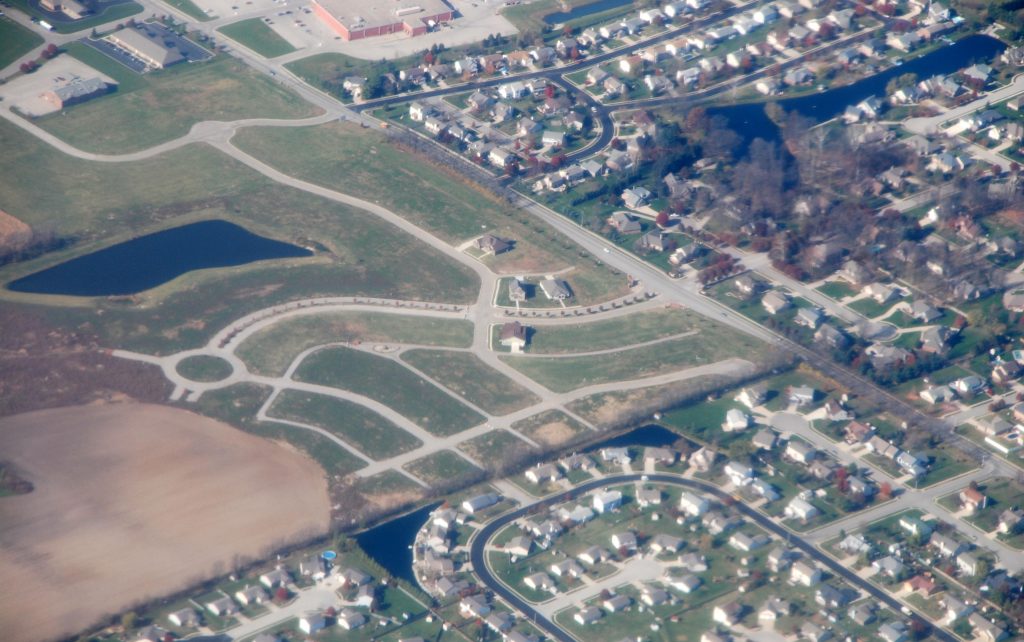
Future land use forecasting is an important input to transportation planning modeling. Traditionally, land use is allocated to individual traffic analysis zones (TAZ) based on variables such as the amount of vacant land, zoning restriction, land use planning and policy limitations, and accessibility, under an externally estimated control number in population and employment growth at the county level. This land use allocation approach does not consider agglomeration factors, the market equilibrium of supply and demand, and is not sensitive to different land use and transportation policy changes. To overcome the limitations of this conventional approach, this research project uses a new analytical approach, i.e., a combination of cellular automata (CA) and agent-based modeling methods to estimate future land use allocation.
CA models have been used extensively in modeling and simulating complicated spatio-temporal processes like land use change. It can model the changes of land use patterns over time and can simulate a variety of spatial processes and influences relevant for land use changes. Agent-based models represent the interactions of different decision-making entities. The agent-based model provides a flexible representation of heterogeneous decision makers or agents, whose behaviors are potentially influenced by interactions with other agents and with their natural and built environment.
This study uses CA to capture the spatial relationships (e.g., clustering) of land development, as well as agglomeration factors. CA represents complicated systems well and is thus a good method to show changes of land use patterns. However, the CA model alone cannot sufficiently explain the changes, because CA model is not sensitive to policy variables. Thus, the study also uses agent-based models to capture the behavior of each agent, which makes it sensitive to policy changes. Agent-based models, unlike CA, can model individual decision-making entities’ behavior as well as their interactions. In addition, this study applies multinomial logit (MNL) model to formulate the CA transition rule for different land types, which estimates the probability of future land use for each cell. Therefore, the model this study developed is an MNL-CA-Agent land use model, which is called LandSys.
In the developed LandSys model, land use changes are performed by the CA model, with external drivers as agents. These agents include: employer, household, developer and government. The model is estimated and validated using a cell-based representation of land (50m x 50m). Then the estimated land use changes can be plugged into Florida Standard Urban Transportation Modeling Structure (FSUTMS) models as updated inputs. In response, FSUTMS models update their demand modeling of the transportation system. The updated traffic information (e.g., accessibility) is then fed back to the LandSys to capture the interaction between land use and transportation and generate more accurate simulation results. LandSys simulates land use change at multiple spatial and temporal scales, as well as representing decision making behaviors of households, employment, developers, and government policies. Future land use patterns and socioeconomic data can be produced to update those inputs of the transportation model. Policy scenarios, such as mixed land use growth management policies, can be simulated and analyzed for decision makers.
The major advantage of this modeling approach is its integration with FSUTMS models. The feedback cycle between land use and transportation models can simulate the interactions between the two. This study employs three indicators to compare the simulation accuracy between the integrated framework and standalone FSUTMS models, including link saturation in the transportation network, overall vehicle miles traveled (VMT), and vehicle hours traveled (VHT). The results show that the inclusion of the land use and transportation feedback in the integrated modeling framework produces better results than the land use or transportation model alone, can help modelers better simulate land use-transportation system, and help decision makers better understand the consequences of different scenarios of the land use and transportation planning.
PDF is here (https://rosap.ntl.bts.gov/view/dot/23704).